This post may contain affiliate links. Please read our disclosure policy.
This post covers everything you need to know about tamarind and how to cook with it! This popular condiment is used all around the world, from Mexico to Thailand, and India, to prepare chutneys, soups, drinks, and more. Learn all about it here!

📘 What Is Tamarind
Tamarind (also known as Tamarindus indica) is a medium-growth hardwood tree. It has green feather-shaped leaves, long fruits with hard pods, and brown skin. Tamarind is native to Africa and grows in many other tropical areas, such as India, Thailand, and Pakistan. It is used in many cuisines around the world and can even have medicinal properties.
The pods contain a soft and fleshy pulp with large seeds. While the young fruit has a green pulp, the ripe one has a dark-brown pulp with a texture similar to dates.

Types of Tamarind
Tamarind pulp is a condiment widely used in Asian and Latin American cuisine. The pulp of the young fruit is very sour, so it is more suitable for savory dishes. In contrast, the pulp of the ripe fruit has a sweeter taste and can be used to prepare desserts or drinks.
You can find tamarind sold in different forms:
- Whole Tamarind: The fruit remains intact and needs to be opened to remove the pulp.
- Tamarind Paste: Also called tamarind pulp, this pulp is compressed into a mass after it has been removed from the pods. It can or not contain the seeds depending on the type and brand of tamarind paste.
- Tamarind Purée: the fruit pulp is boiled with some sugar and sometimes preservatives.
You can also find ready-made tamarind sauces or tamarind chutneys in Asian or Indian supermarkets.
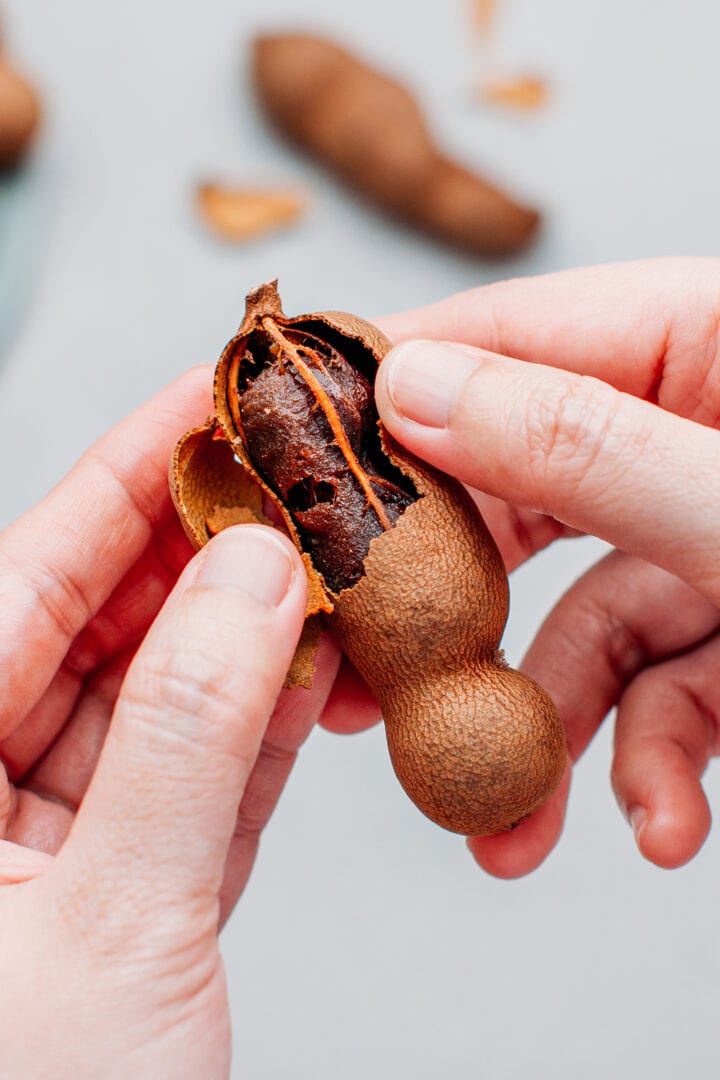

🍜 Ways to Use It
Tamarind is versatile and can be used in a handful of ways:
- To make sauces: Combined with spices, sugar, and other ingredients, tamarind can be used to make dipping sauces. A few examples, for example, are “Imli chutney,” which is an Indian dipping sauce usually served with samosa or onion bhaji, or “Nuoc Mam Me,” which is a Vietnamese dipping sauce.
- To make candied tamarind: Also called Tamarindo, it’s a Mexican tamarind candy prepared with tamarind pulp, sugar, and chile-lime seasoning.
- In soups and broths: Diluted and then strained, tamarind juice can be used to add an extra layer of flavor to your soups or broth by bringing a subtle sourness. It is used, for example, in the famous Thai soup Tom Yum.
- In curries: Stir in a couple of tablespoons of tamarind juice to your curry, just like you would do it with lime juice.
- In cocktails and drinks: Replace the lime juice in cocktails with tamarind juice for sweet and sour notes. It also balances very well with pineapple juice! You can also combine tamarind juice with sugar and ice to make iced tamarind juice.
- To make jam: Cooked with sugar, tamarind makes a delicious spread.
- As a snack: You can enjoy the fruit directly! Simply peel it and eat the pulp!
- As an alternative to vinegar: tamarind juice has a sweet and tangy flavor, so it can easily replace vinegar in dressings. Try it in a salad dressing!
🥣 How to Make Tamarind Juice
Here is the process of making tamarind juice, which can be used in soups, curries, cocktails, and more:
- Add 3 tablespoons of tamarind pulp to a bowl. You can use tamarind pulp or remove the pulp from the whole fruit by yourself, although the latter option is quite time-consuming.
- Cover with ⅓ cup of boiling water and let it rest for 10-15 minutes. At this point, you can use a spoon to slightly mash the tamarind pulp.
- Strain through a fine sieve mesh and discard the pulp. Note: You can also keep the pulp to use it to make other dishes like chutney, for example.
- The tamarind juice is now ready to use!
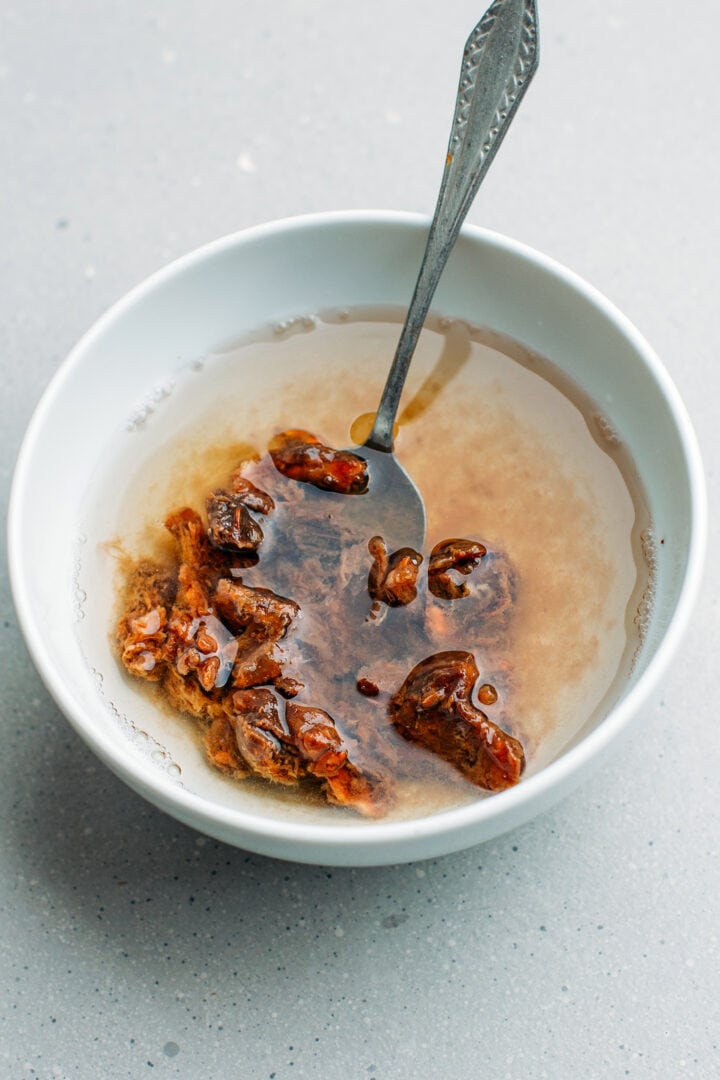
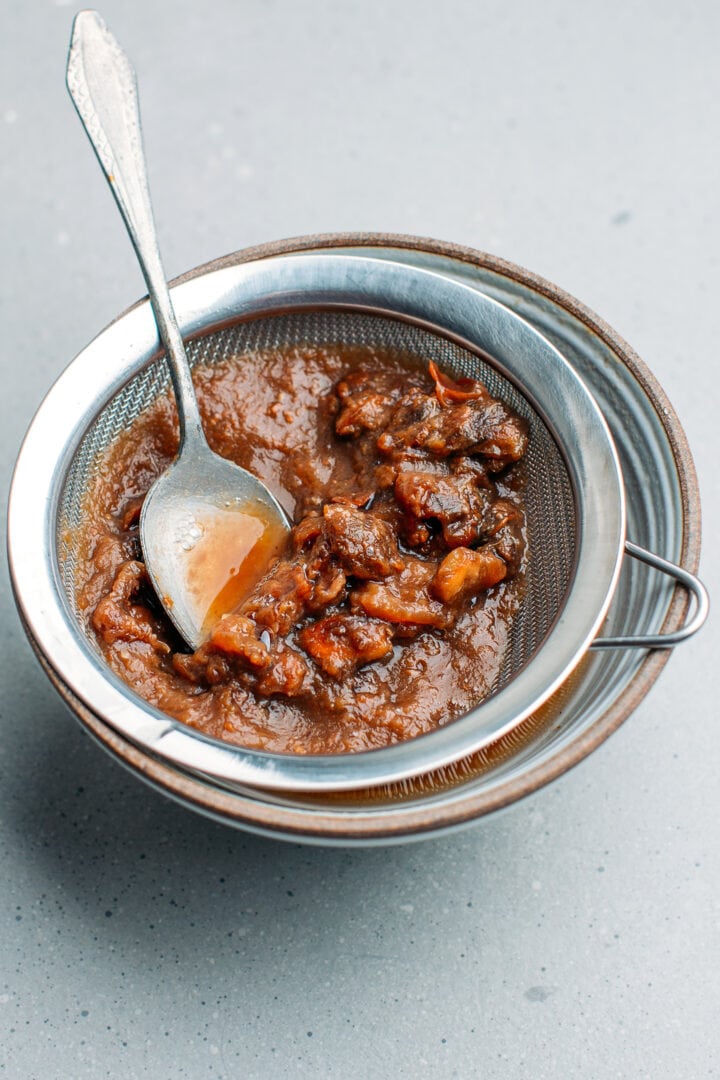
🩺 Nutritional Benefits
Tamarind contains a lot of vitamin C, so it can help to keep teeth and gums healthy.
In addition to that, thanks to its high content of magnesium, potassium, and iron, it prevents inflammation, lowers blood pressure and diabetes, strengthens the bones, and may help prevent anemia.
What’s more? It not only helps the nervous system to function properly due to its high thiamin content but also helps to avoid cramp syndrome and the sensation of stitches in the palms and feet.
Tamarind also prevents constipation as it is rich in fiber.
It helps reduce fatigue: Finally, if you get tired at any point, try eating sweet tamarind or drinking a glass of tamarind juice. It can help reduce fatigue and recharge your batteries! How come? Well, that is due to its riboflavin content, which helps release energy from carbohydrates. Just be aware that tamarind is quite high in calories, just like dates or raisins, so eat in moderation.
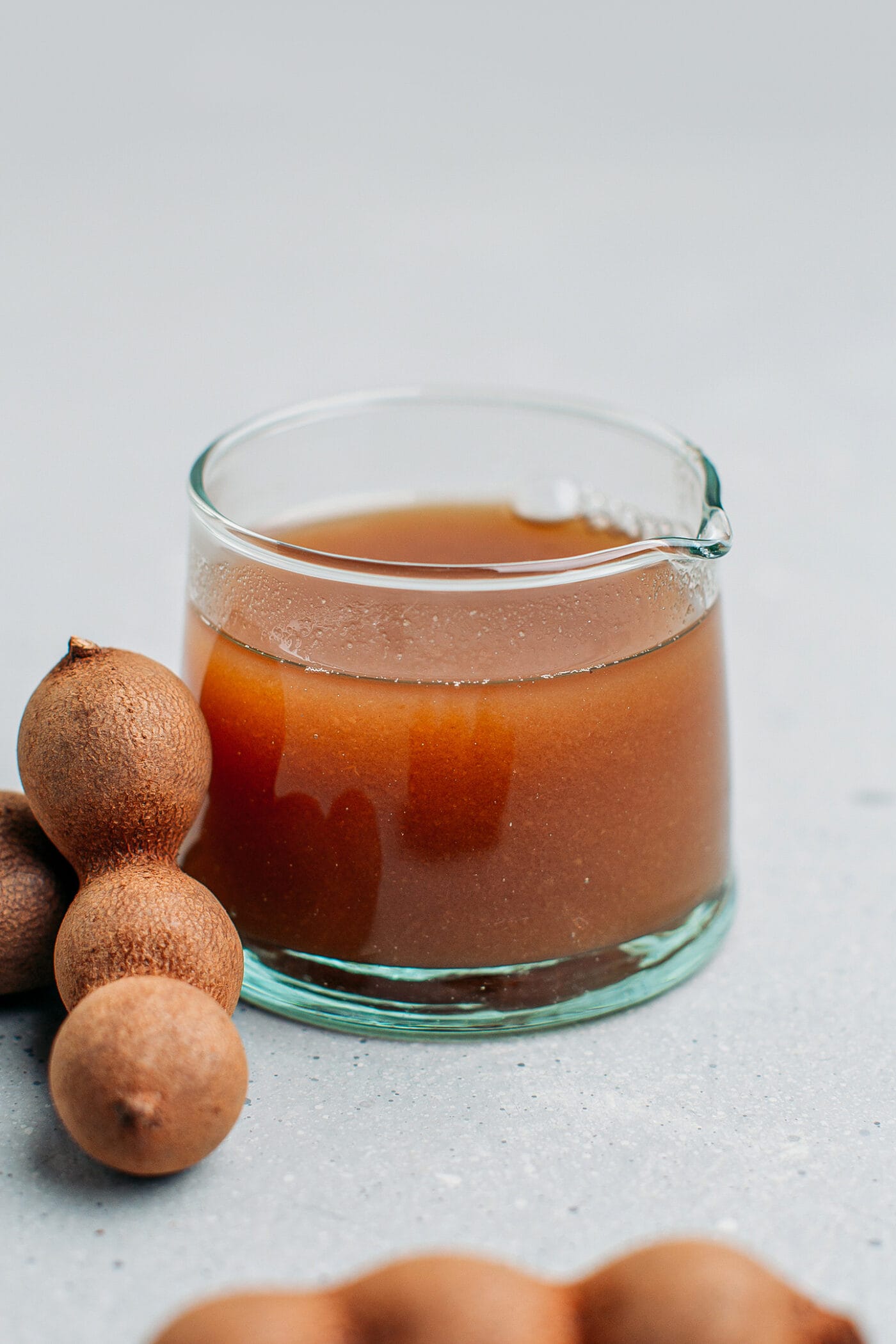
📙 Nutritional Information
Per 100g of tamarind pulp:
- 244 calories
- 0.6g of fat
- 63.8g of carbohydrates
- 39.9g of sugar
- 5.2g of fiber
- 2.9g of protein
📔 Recipes
Now that you know what tamarind is, it’s time to put it to use! Check out these plant-based recipes that make use of tamarind!
💬 FAQ
Ripe tamarind has a sweet and sour flavor. It has notes of molasses and caramel with a subtle tanginess.
Yes, it is totally safe to eat raw tamarind! Although I highly recommend eating the ripe kind, as unripe tamarind is incredibly sour.
Tamarind in pods can be stored in an airtight container at room temperature. Tamarind paste/pulp can be kept at room temperature in a cool and dark place. Regarding tamarind juice, tamarind purée, and other sauces, keep them in the refrigerator.
Tamarind pulp is just like any dried fruit. You can keep it as long as you would keep dates, figs, or raisins, for example. It will keep for about 6 months at room temperature.
Worcestershire sauce, balsamic vinegar, or even pomegranate molasses can make good substitutes, although their flavor profile is different, and you won’t get the exact same taste.
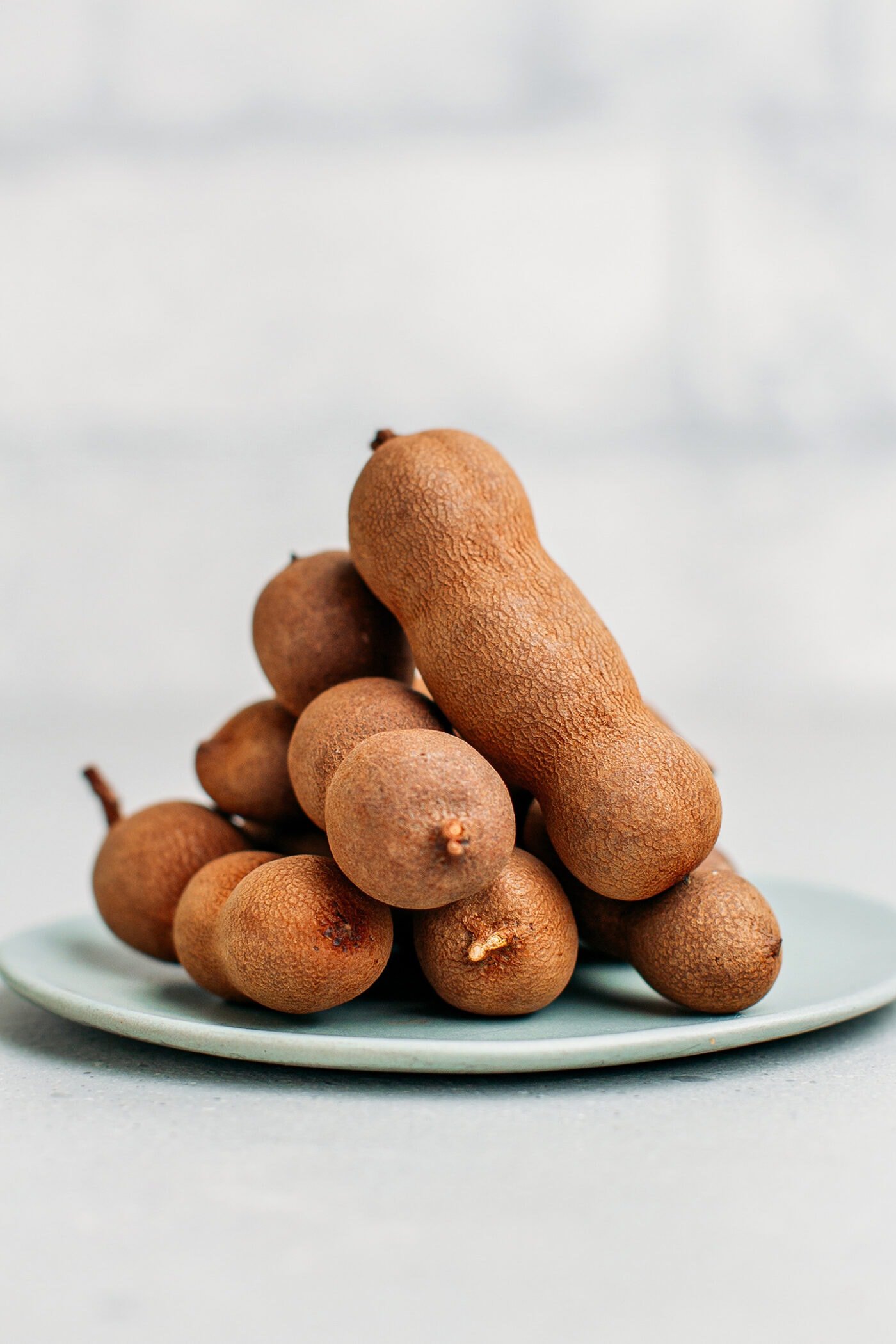

Save this recipe!
Enter your email below and I’ll send it to your inbox!
Plus, you will receive new recipes every week!
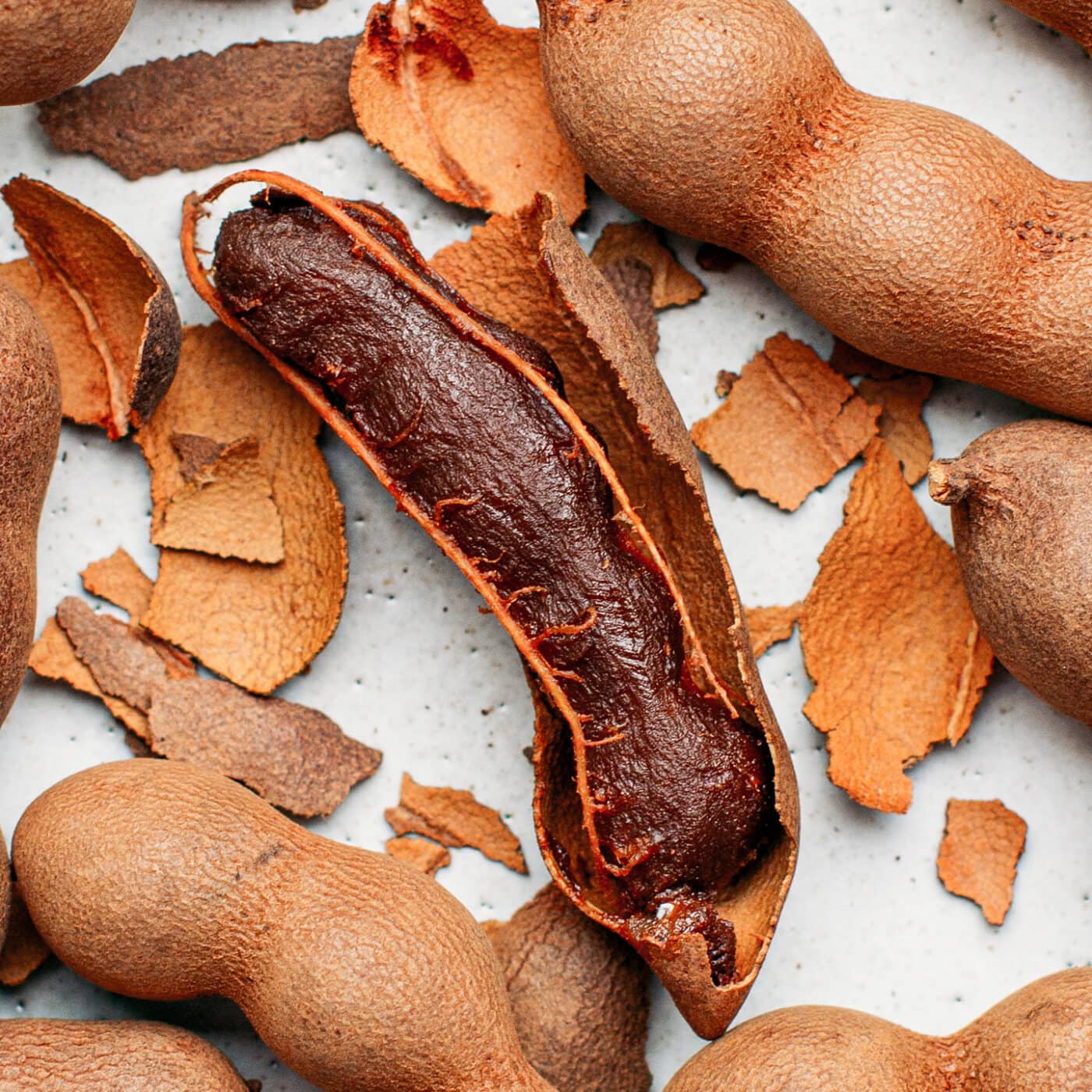
What is Tamarind (and How to Make Tamarind Juice)
Ingredients
- 3 tbsp tamarind pulp
- 1/3 cup water
Instructions
- Add the tamarind pulp to a bowl. You can use tamarind pulp or remove the pulp from the whole fruit by yourself, although the latter option is quite time-consuming.
- Bring the water to a boil and pour it over the tamarind pulp. Let it rest for 10-15 minutes. At this point, you can use a spoon to slightly mash the tamarind pulp.
- Strain through a fine sieve mesh and discard the pulp. Note: you can also keep the pulp to use it to make other dishes like chutney, for example.
- The tamarind juice is now ready to use! Tamarind juice will keep for up to 7 days in the refrigerator.

About the Author
Thomas Pagot is the founder, photographer, and recipe developer behind Full of Plants. He created the blog in 2016 as a personal cookbook for vegan recipes. Through years of recipe development, Thomas has successfully grown Full of Plants into a trusted resource for plant-based recipes.








Leave a Comment
Amazing work! Thank you Thomas.
Love your post! Very helpful. I have found the taste of the tamarind from the fruit is lighter, sweeter and less sour than from a concentrated source. So it’s worth preparing at times depending on the need.
Thanks Tetyana!
Yes, that is true! The tamarind pulp from the fruit tastes sweeter than the one that comes in a block.